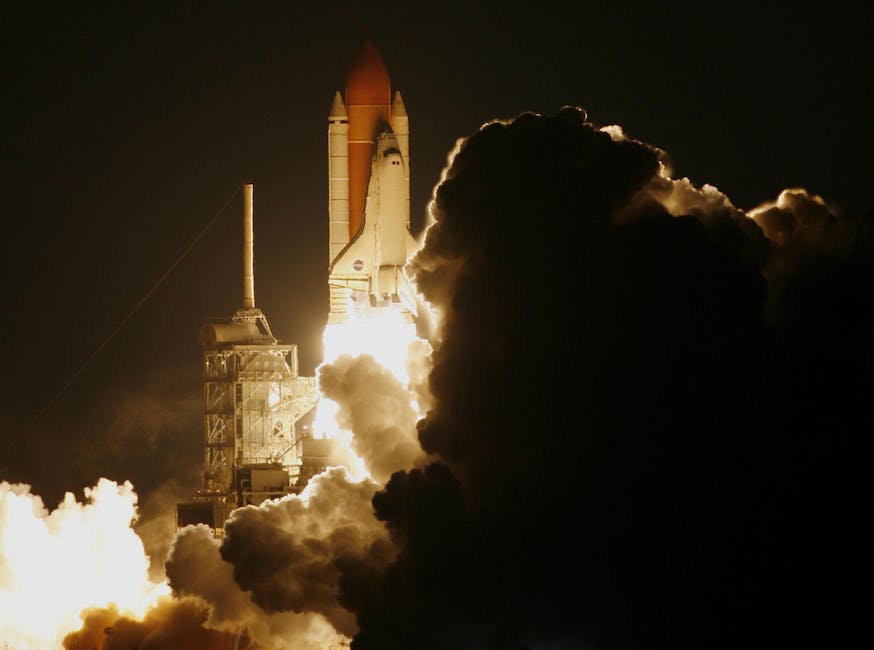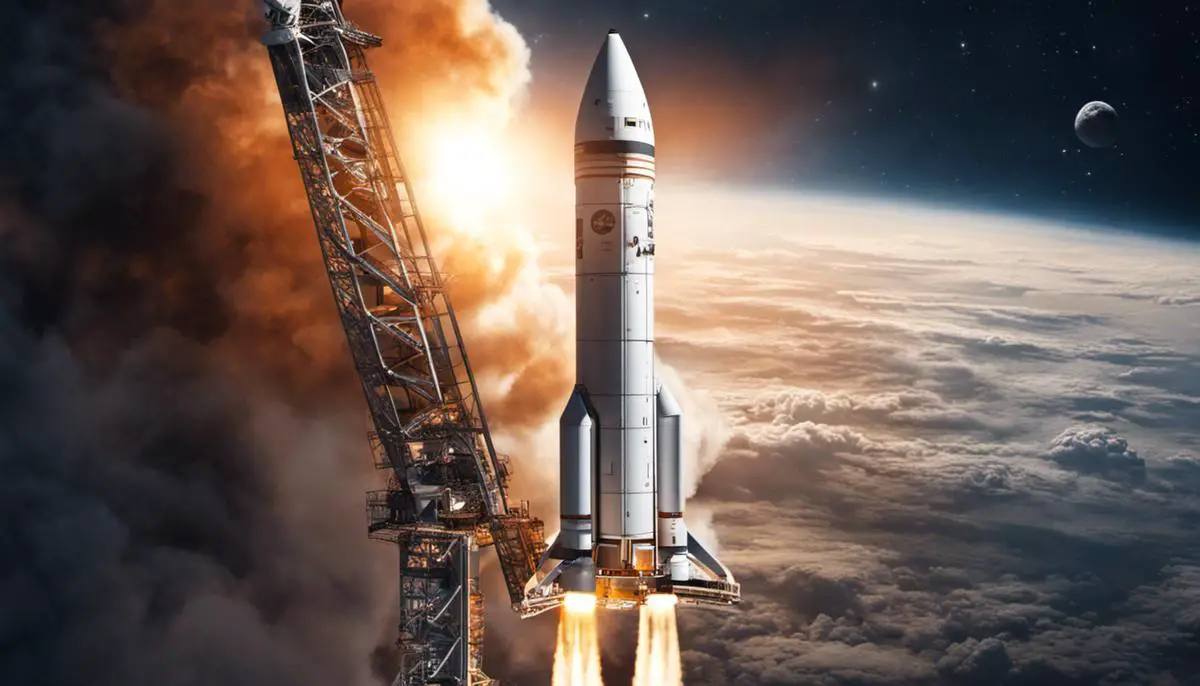The vast expanse of space with its beguiling mysteries has been a constant source of human captivation, leading to significant advancements in space exploration. Mankind’s first successful step onto the lunar surface, achieved through the incredible Apollo missions, not only marked a historic milestone but also laid the groundwork for future interplanetary missions. This pioneering endeavor ignited a wave of technological innovation ranging from rocketry and communication systems to computer technology, all of which are critically important in the ongoing quest to explore Mars. Understanding the lessons derived from the risks, triumphs, and the ultimate success of the Apollo missions offers invaluable insights into the planning and execution of subsequent space missions.
Contents
Technological Advancements in Apollo Missions
Rocketry and Propulsion Technologies
The Apollo missions witnessed groundbreaking advancements in rocketry and propulsion technology, which proved to be critical not just for the lunar missions but also for future explorations, including Mars. The Saturn V rocket, which was used for Apollo missions, was one of the biggest engineering marvels of its time. This mammoth vehicle was designed to send both the Apollo Command Module and the Lunar Module to the moon.
The rocket engines used cryogenic oxygen and hydrogen for the upper stages and a special blend of highly refined kerosene, known as RP-1, for the first stage. The J-2 and F-1 engines of the Apollo missions laid the groundwork for the development of future rocket engines. These engines were the stepping stones towards the development of present-day systems like NASA’s Space Launch System, which will enable humans to reach Mars in future missions.
Advancements in Communication and Tracking Systems
The Apollo missions required a sophisticated network of communication and tracking systems to ensure the safety and success of the lunar landings. The complexity and effectiveness of these systems were unparalleled during their time, and they laid the groundwork for future communication networks used for Mars exploration.
One such system was the Manned Space Flight Network (MSFN), which employed a combination of radar tracking, radio frequency data, and telemetry to track lunar missions. This technology allowed for real-time communication between astronauts and mission control on Earth. Similar technology has been used in Mars missions, enabling communication between rovers on the Martian surface and their control teams back on Earth.
Computer Technology and Guidance Systems
Another important technological breakthrough during the Apollo missions was the development of the Apollo Guidance Computer (AGC). The AGC was one of the first computers to use integrated circuits, or microchips. It was responsible for controlling navigation and guidance systems and making real-time calculations that were critical during both the journey to the moon and the landing process.
The legacy of the AGC endures in the computer systems used in modern spacecrafts. Current Mars missions use descendants of this technology for similar purposes – navigation, controlling various systems on the rover, and making on-the-spot computations. Each Mars rover carries a computer brain that is a direct descendant of the breakthrough technology used in the Apollo missions.
The Launchpad of Advanced Space Technology
The elusive nature of the Apollo missions triggered a boom in new technologies pushing the envelope of space technology research. The primary goal of the time was to ensure safe moon landings and safe return of astronauts, but several of these technological breakthroughs paved our way to other planets.
The seismometer was among the vital scientific apparatus carried by the Apollo missions to the Moon. It offered the first-ever seismic data from another celestial body – a fundamental aspect in deciphering the structure and composition of planets. The data from the Apollo passive seismic experiment eventually became an invaluable resource in designing Mars landers and rovers.
The Apollo missions thus laid the stepping stones for the exploration of other planets, including Mars. The methods, equipment, and technological prowess honed during these missions are being leveraged today to strategize and implement Mars exploration.

Apollo Missions: Lessons and Challenges
Overcoming the Daunting Challenges of the Apollo Program
The Apollo program, hailed as a milestone in human space exploration, faced formidable challenges. The most critical of these were issues related to navigation and lunar landings.
The Apollo lunar module had a two-fold mission: to descend from lunar orbit, land safely, then ascend and rendezvous with the command module. A multitude of unpredictable variables – variations in gravity, uneven terrain, and unsure landing surfaces made the task extremely perilous. To address these hurdles, a computerized semi-automatic landing system was engineered, empowering the landing craft’s pilot to maintain complete control over descent. This ground-breaking solution made the legendary lunar landings possible.
The trek to the moon was synonymous with navigation challenges. Guiding a spaceship across more than 250,000 miles of void space was an undertaking of immense complexity. To conquer this, NASA innovated new guidance and navigation systems, incorporating the then-nascent arena of inertial navigation, supplemented with star sightings. This trailblazing technology has since steered every U.S. human spaceflight.
Learning from Apollo 13: Crisis Management in Space
The Apollo 13 mission was a testament to the sheer resilience of human ingenuity in crises. An oxygen tank exploded in the command module during transit to the moon, precipitating a critical life-threatening crisis. NASA personnel on the ground, complemented by the astronauts in the spaceship, devised a groundbreaking solution – repurposing the lunar module as a makeshift “lifeboat” to secure the safe return of the crew. This mission showcased the necessity of meticulously designed backup systems, extensive problem-solving training for astronauts and ground crew, and robust communication protocols during emergencies.
Influence of Apollo Missions on Mars Exploration
In numerous ways, the trials of the Apollo expeditions have cast light on the path towards Mars. Theoretical challenges of landing on Mars echo those of Apollo missions due to thin atmosphere and treacherous terrain. The solutions designed for the Apollo missions offer a valuable groundwork for the development of Mars landing craft.
The guidance and navigation systems innovated during the Apollo era persist as the foundational base for navigation systems employed in recent Mars missions. Moreover, with the aspiration of manned Mars missions, lessons learned from Apollo 13’s crisis management will be invaluable. These missions will necessitate unprecedented pre-planning, training, and technologically advanced life-support systems to safeguard astronaut life in potential crises.
The Apollo missions, launched by NASA in the 1960s and 1970s, pushed the limits of technology and human capabilities in their ambitious quest to land humans on the moon and safely return them to Earth. The lessons learned in overcoming the challenges these missions faced have been critical in shaping the planning and execution of future missions aimed at exploring Mars.

Scientific Discoveries and Their Impact on Mars Mission
Apollo Missions: Paving the Way for Mars Exploration
The series of Apollo missions, initially aimed at exploring the moon, led to major advancements in our understanding of space. These missions not only achieved their primary objectives but also set the stage for potential Mars explorations. The technological and scientific breakthroughs enabled by the Apollo missions laid the groundwork for tackling the greater complexities and challenges associated with exploring the Martian landscape.
Scientific Milestones and Lessons
One significant accomplishment of the Apollo missions was the collection of Moon rock samples. Over 842 pounds of lunar material, including rock and soil, were retrieved during Apollo 11 through 17. These specimens have been fundamental in understanding the composition and geologic history of the moon. They reveal the existence of lunar basalt, a type of rock formed from rapidly cooled lava. This discovery parallels Mars, as scientists believe the red planet also contains basalt rocks.
The Apollo missions also carried out several surface experiments, particularly relating to seismic activity. Astronauts installed sensors to detect ‘moonquakes,’ linking seismic activity to the moon’s tectonic structure. This advancement ultimately contributed to the creation of Mars Insight Lander mission, aiming to explore seismic activity on Mars and further understand how rocky planets like Earth and Mars evolve and shape.
Conquering Skepticism and Aiding Inspiration
A secondary, but equally important, influence of the Apollo missions has been its ability to shape public opinion about space exploration. The spotlight on these missions has helped diminish skepticism about space travel, showcasing that astronauts could indeed venture beyond Earth and return safely.
The iconic image of the first man stepping onto lunar soil ignited not only a sense of accomplishment but also a collective excitement regarding what mankind could achieve. The popular sentiment rallied around scientific exploration, fostering public support for further space ventures and research.
Legacy of Apollo Missions in Contemporary Mars Exploration
The legacy of the Apollo missions continues to cast a long shadow, profoundly shaping today’s Martian exploration strategies. Ingredients of this impact include trailblazing technologies like the Lunar Roving Vehicle, debuted during Apollo 15, provided inspiration for the manifestation of robotic rovers such as Curiosity and Perseverance that currently scour the Martian terrain. Moreover, cutting-edge spacesuit technology advances during the Apollo era have sculpted the design of suits considered for future Mars explorers, and the methodologies utilized for lunar landings serve as a foundation for Martian descend.
Furthermore, the knowledge harvested from lunar existence also provides a crucial blueprint for the prospective colonization of Mars. The wealth of data procured from Apollo missions aids in strategizing prolonged human habitation on the Moon, Mars, and other celestial bodies, enriching our understanding of the measures required for life sustenance in such exacting environments.
In essence, the Apollo missions leave an indelible mark on the ongoing Mars exploration, carving significant technological and procedural paths, laying scientific precedents, and igniting public enthusiasm for space exploration. As we stride towards realizing manned Mars expeditions, these formative lessons from the Apollo period will serve as an irreplaceable touchstone.

Spacesuits Evolution from Apollo to Mars
Progression of Spacesuit Technology
A key component in human space exploration, the Apollo missions acted as a catalyst for pioneering leaps in spacesuit technology. Tailor-made for lunar conditions, these Apollo spacesuits paved the way for future developments pertinent to Martian exploration.
Regarded as a technical wonder, Apollo spacesuits were primarily designed to safeguard astronauts against the Moon’s ruthless environment. Each suit, constructed with a composite of twenty unique layers, incorporated superior insulating materials, synthetic fabrics, and protective films to offer essential protection from heat, micrometeoroids, and harmful radiation. Of equal importance, these suits were equipped with a Portable Life Support System (PLSS) — a standalone apparatus designed for managing oxygen, temperature, and carbon dioxide levels critical for all outer space jaunts.
Influence of Apollo Missions on Mars Exploration
The legacy of Apollo’s spacesuit technology is felt enormously in the ongoing Mars exploration efforts. Current Mars suit designs take into account aspects such as ultraviolet radiation blocking, micrometeoroid protection, and stable internal pressure, much like their Apollo precursors. However, the advancement in environments and purpose further necessitate the development of new materials and designs.
Mars suits need to be more versatile than lunar ones. They must protect astronauts from a wider temperature range, higher radiation levels, and Mars’ thin carbon-dioxide filled atmosphere. To meet these challenging requirements, NASA is exploring advanced technologies and materials influenced by the Apollo missions. An example is NASA’s Z-2 suit designed specifically for a Martian environment, which includes flexible joints, body-mounted life support system, and abrasion-resistant lower body layer.
Incorporation of Advanced Technologies
The incorporation of advanced life-support systems in spacesuits has also evolved remarkably from the Apollo era. In the Apollo missions, PLSS had to be recharged after each EVA (Extravehicular activity). However, for Mars missions, the life-support systems need to be more automatic and sustainable for longer durations.
Thermal control systems, a critical aspect of the Apollo-era PLSS, have seen advancements in both automatic temperature control and efficiency. Suit design has also shifted from a default cool and damp environment to a more comfortable and thermally efficient dry environment.
Furthermore, spacesuit designers are exploring how to integrate modern technologies such as augmented reality (AR) into helmet visors. Taking cues from the helmet-mounted, voice-activated checklist system (VACS) developed for the Apollo missions, Mars suits may feature AR to provide real-time feedback, navigation, and systems management information directly within the astronaut’s field of view.
Every Apollo mission has significantly impacted current ventures and future Mars exploration. The gradual advancements in spacesuit technology epitomize the accumulation of past experiences, contemporary capabilities, and future space challenges we’re striving to overcome.

Impact of Apollo Missions on future Mars Missions
Apollo Missions: Pioneering the Future of Space Exploration
The concept of Mars exploration sprang to life in human imagination only after the triumphant accomplishments of Apollo missions like Apollo 11, 12, 14, 15, 16, and 17, which successfully facilitated moon landings. As the Apollo lunar modules touched the moon’s cratered and dusty surface in the late 1960s and early 70s, they etched a navigational blueprint that remains a steady beacon for Mars exploration today.
Just as the Apollo astronauts had to navigate the unfamiliar lunar landscape, so too must our rovers and, eventually, manned missions grapple with the unpredictable terrain of Mars. The lessons learned from Apollo Lunar Rover navigation have been invaluable in maneuvering the rocky Martian landscape. However, it’s more complex than the moon. Mars possesses a more diverse terrain, with deep valleys, high-rise mountains, overlying dust and intense sandstorms — an upgraded challenge compared to Apollo’s moon missions.
Are We Alone: Astrobiology and Apollo Missions
The Apollo missions fundamentally changed our view of the cosmos and our place within it. They provided the first detailed images and scientific data about the moon’s barren surface, prompting questions about the existence of life elsewhere in the universe that are echoed in Mars exploration. The investigation of lunar samples, as carried out by the Apollo astronauts, set a critical precedent for what we look for in Martian rocks and soil today in our quest in finding signs of life.
Technology and Resources: Evolution Since Apollo
Implementing an effective crewed mission to Mars involves extensive technological advancements, particularly in crew habitats, transportation, and life support systems. The Apollo missions offered initial lessons on these guiding factors, underpinning the future Mars missions. Noteworthy advancements since the Apollo era include miniaturization of electronics, increased computer power, and the development of autonomous systems – all critical factors in propelling us from the lunar to the Martian landscape.
Risk Management and Contingency Planning
The Apollo 13 mission underscored the importance of risk management and contingency planning in space exploration. Despite the dangerous malfunction that forced the crew to abort their mission, the safe return of the Apollo 13 astronauts is often hailed as the most successful failure. This mission has served as a profoundly influential example for Mars mission planning, particularly for agencies like NASA, emphasizing the necessity for robust contingency strategies and the readiness to handle near-catastrophic failures.
Test of Human Endurance
Although no humans have yet embarked on the much longer voyage to Mars, the stays of up to three days by Apollo 17 astronauts on the lunar surface provided early insight into how humans adapt and work in low-gravity environments. Analysis of physical and psychological challenges experienced by moon-walking astronauts helps to better understand the mental and physical toll of the projected six-to-eight months’ journey to Mars.
The enduring influence of the Apollo missions cannot be overstated. They served as a technological David against the Goliath of the unknown, slinging humanity forward onto the path of interplanetary exploration. The Apollo missions harbor a deep reservoir of lessons—lessons that we continually draw upon to guide us in our grand quest to Mars.

Regardless of the countless challenges, the Apollo missions have unequivocally impacted the trajectory of space exploration. Their enduring legacy continues to be the cornerstone of planned missions to Mars by providing critical technical knowledge, scientific discovery, and crisis management skillsets. The evolution of spacesuit technology is a testament to the path-breaking strides of the Apollo missions. As we march towards the exciting prospect of setting foot on Mars, we do so standing on the shoulders of the Apollo missions. These giant leaps for mankind will undoubtedly continue to inspire, guide, and set precedents for our future pursuit of unveiling the mysteries of the cosmos.
